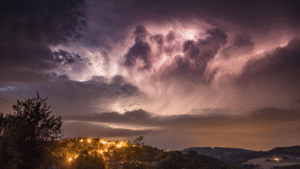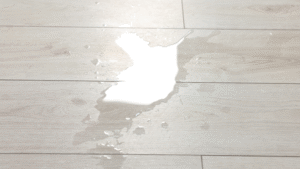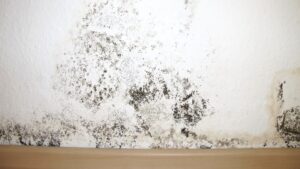Ever notice some funky dark spots on your wall or maybe a bit of fuzz hanging out near your baseboards? If so, you’re probably thinking, “Uh oh, is that mold? Black mold? Or could it just be…dirt?” You’re definitely not alone in wondering this, especially if you call Sonoma County home. Our coastal air, those seasonal rains we get, and let’s be honest, some of our lovely older houses can create the perfect environment for mold to say hello.
Now, over here at West Coast Fire & Water, we’ve spent almost a decade helping folks from Ukiah down to Marin tackle these moldy situations safely, quickly, and with a real understanding of what you’re going through. We’re a local bunch, so we know the ins and outs of Northern California homes, and we’re here to walk you through figuring out what’s what and when to call for mold remediation in Sonoma County.
Why Figuring Out What It Is Really Matters
It’s totally understandable to feel a little panicked when you spot something growing in your house. But the best first step? Take a breath and let’s take a look at what’s going on. Knowing exactly what you’re dealing with is important for a few key reasons:
Your Health Comes First
Some types of mold can produce these things called mycotoxins. This is why mold can cause all sorts of issues like allergies, asthma flare-ups, ongoing sinus problems, and even more serious long-term health stuff, especially for the little ones, older folks, and anyone with a weaker immune system.
Protecting Your Home
Mold isn’t just a health concern; it can actually damage things like drywall, insulation, and wood. Left to its own devices, it can even mess with the structural safety of your house. Yikes!
Saving You Money Down the Road
Catching mold early usually means a simpler, less expensive fix. Ignore it, and you could be looking at some serious material replacements and restoration costs. Not fun.
Dealing with Insurance
If your mold problem is linked to water damage, your insurance company might want some professional proof of what kind of mold it is and how bad it is before they approve any claims.
Meet the Usual Suspects: Black Mold, White Mold, and Good Old Dirt
Knowing what to look for and where these things like to hang out can really help you figure out your next steps. Let’s break down the differences between mold and dirt:
Black Mold
- What it Looks Like: Kind of slimy and dark, think greenish-black or gray.
- Where You Might Find It: Bathrooms, basements, inside your HVAC system, or anywhere that’s had a persistent leak.
- What it Smells Like: A strong, musty odor that just doesn’t go away.
- How Worried Should You Be? Definitely concerned. It’s been linked to some serious breathing and nerve issues.
White Mold
- What it Looks Like: Can be powdery, fluffy, or just fuzzy white spots that can spread pretty quickly.
- Where You Might Find It: On wood, cardboard, plants, and fabrics in damp areas.
- What it Smells Like: A bit musty, but usually not as strong as black mold.
- How Worried Should You Be? Moderately worried. It can still cause allergic reactions and break down materials over time.
Dirt
- What it Looks Like: Usually dry, flaky, or just dusty. The color can be anything from brown to gray.
- Where You Might Find It: Typically just sitting on surfaces and doesn’t usually spread.
- What it Smells Like: Usually neutral, unless it’s mixed with some mildew or other organic stuff.
- How Worried Should You Be? Not at all! It’s usually easy to wipe away with your regular cleaning routine.
Not Sure? Here’s How to Get Answers
If you’re still scratching your head, the safest bet is to get it tested. Here are a couple of ways to do that:
DIY Mold Test Kits
You can grab these at most hardware stores. They usually involve collecting some spores and sending them off to a lab. They can tell you if mold is present, but the results might not be super detailed.
Calling in the Pros (Like Us!)
At West Coast Fire & Water, we’ve got some cool tools to really get to the bottom of things, like:
- Moisture meters: To find hidden leaks that might be causing the problem.
- Thermal imaging: To spot temperature differences that could indicate moisture.
- Air quality testing: To see if there are mold spores floating around in the air.
This kind of professional testing not only confirms if it’s mold but also helps us figure out exactly what kind it is, which is super important for getting rid of it safely and effectively.
Common Places Mold Loves to Hang Out in Sonoma County Homes
From our experience working all over Sonoma, Mendocino, and Marin counties, we’ve noticed that mold really loves these spots because they tend to trap moisture:
- Crawlspaces that don’t have good airflow
- Attics, especially if the roof is a bit older or has a leak
- Underneath sinks and behind dishwashers
- Basements or garages after those big storms we get
- Window sills in homes with older, less effective seals
Friendly Heads-Up
Mold really thrives on the dampness left behind after our Northern California rainy seasons. So, after every bout of rain, it’s a good idea to peek at those vulnerable spots, even if you haven’t had any major water issues.
So, You Found Mold – Now What?
Here’s a simple breakdown of what to do to stay safe:
- Hands Off! Try not to touch it. Mold spores can easily become airborne if you disturb them.
- Skip the Bleach: While bleach might make the mold look lighter, it doesn’t really get into porous materials where the mold roots are. Plus, it can make it harder to detect later.
- Give Us a Call: Our team is ready to go 24/7 for mold cleanup in Sonoma County and the surrounding areas.
Our Mold Remediation Process
We follow some pretty strict industry standards (called IICRC) to make sure we clean up mold thoroughly and safely:
1. First Look & Testing
We check for moisture, see how bad the damage is, and figure out what kind of mold it is.
2. Containment is Key
We use plastic sheeting and something called negative air pressure to keep the mold from spreading to other areas.
3. Cleaning the Air
We use special HEPA filtration systems to get those mold spores out of the air.
4. Getting Rid of the Mold
We either clean the affected materials or safely remove and replace anything that’s too contaminated.
5. Final Touches & Prevention
We sanitize the area and put on some mold inhibitors to help prevent it from coming back. We’ll also give you some tips to keep mold away in the future.
Why Choose Your Friendly Neighbors at West Coast Fire & Water?
We’re more than just a restoration company, we’re part of your community! Here’s what makes us a little different:
- Local Through and Through: We’re based right here in Ukiah and proudly serve Sonoma, Mendocino, and Marin counties.
- Quick to Respond: We know mold doesn’t wait, so we’re often on-site within hours.
- We Know Our Stuff: From wildfire damage in Paradise to water leaks in Santa Rosa, our team has seen pretty much everything.
- Always Here for You: We’re available 24/7, so you can always reach us, day or night.
- We Do the Whole Job: We don’t just remove the mold; we help get your home or business back to a safe and comfortable state.
Simple Tips to Keep Mold Away
A little prevention goes a long way! Here are some things you can do to keep mold out of your house:
- Use dehumidifiers in those damp spots.
- Fix any leaks right away, even those little drips matter!
- Make sure your bathrooms and kitchens have good ventilation.
- Take a peek in your attic and basement regularly, especially after it rains a lot.
- Keep your gutters and downspouts clear so water doesn’t back up.
Bonus Tip
Consider getting a hygrometer to keep an eye on the humidity inside your home. Ideally, you want to keep it between 30% and 50%.
When Should You Call Us for Mold Help?
If you think you’ve got mold growing in your place, don’t wait around! That stuff can spread like crazy and nipping it in the bud can really keep your home safe and sound.
Whether you’re seeing some funky black spots hiding behind your walls or just getting a whiff of something musty in the crawlspace, West Coast Fire & Water is ready to jump in and help. We get that mold is a big deal, and we bring our years of know-how to tackle it quickly and with real care.
Get Mold Remediation, Fast! West Coast Fire & Water
At West Coast Fire & Water, our goal is simple: to help our local families live safely and comfortably. We’re here 24/7 and ready to help you get your home back to being healthy again!
Contact us now or give us a call today at 707-462-5326 to schedule a mold inspection or if you need an emergency response.

Marketing Director, West Coast Fire & Water
Christian Ahlmann is the Marketing Director at West Coast Fire & Water, a California restoration company providing water, fire, mold, biohazard, storm, and reconstruction services across multiple locations. He leads brand, content, and demand programs that support rapid response and customer education. His background blends operational storytelling, community engagement, and crisis communications.



